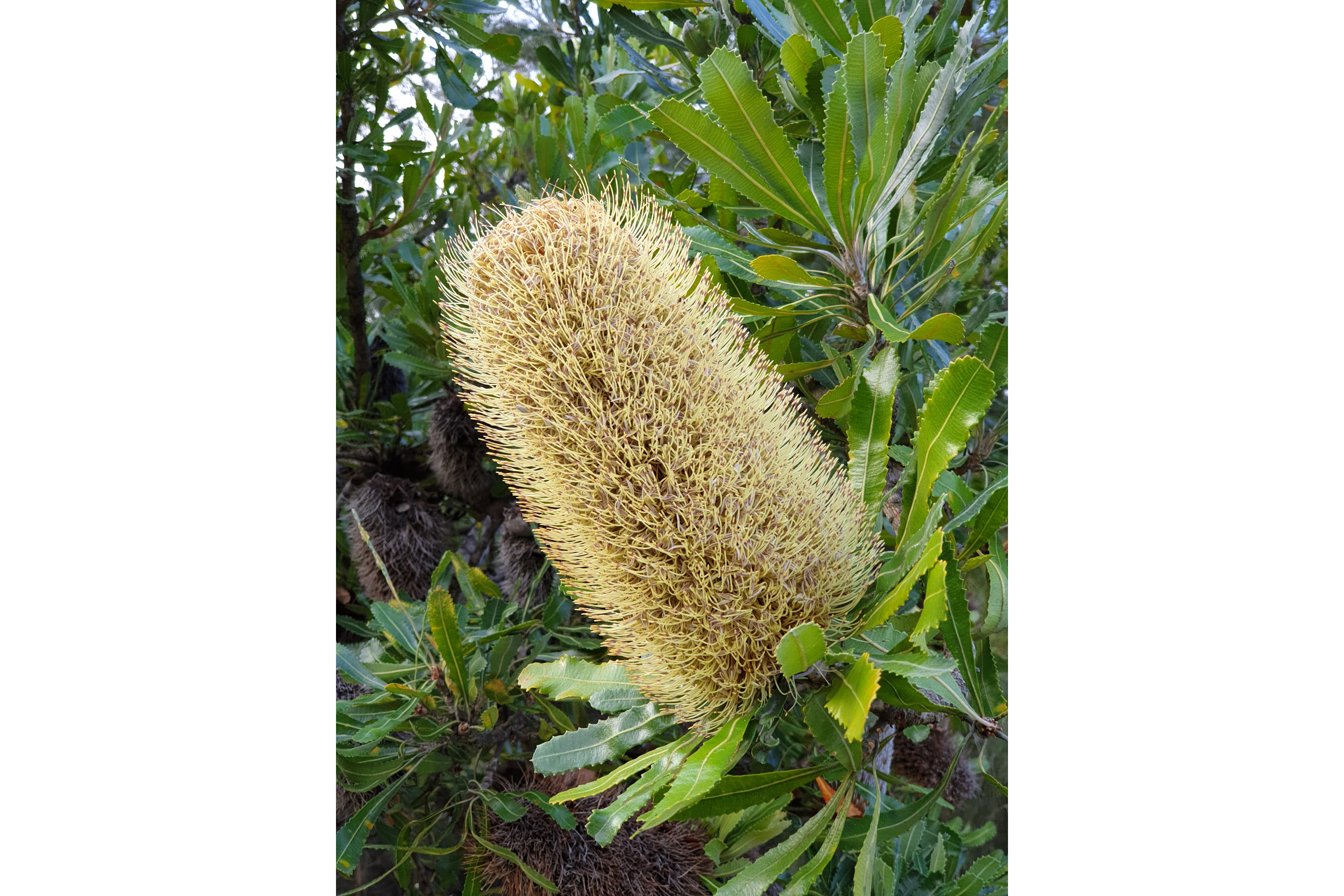Wallum banksia
(Banksia serrata)

Description
Banksia aemula, commonly known as the wallum banksia, is a shrub of the family Proteaceae. Found from Bundaberg south to Sydney on the Australian east coast, it is encountered as a shrub or a tree to 8 m (26 ft) in coastal heath on deep sandy soil, known as Wallum. It has wrinkled orange bark and shiny green serrated leaves, with green-yellow flower spikes, known as inflorescences, appearing in autumn. The flower spikes turn grey as they age and large grey follicles appear. Banksia aemula resprouts from its woody base, known as a lignotuber, after bushfires. First described by the botanist Robert Brown in the early 19th century, it derives its specific name "similar" from its resemblance to the closely related Banksia serrata. No varieties are recognised. It was known for many years in New South Wales as Banksia serratifolia, contrasting with the use of B. aemula elsewhere. However, the former name, originally coined by Richard Anthony Salisbury, proved invalid, and Banksia aemula has been universally adopted as the correct scientific name since 1981. A wide array of mammals, birds, and invertebrates visit the inflorescences and are instrumental in pollination; honeyeaters are particularly prominent visitors. Grown as a garden plant, it is less commonly seen in horticulture than its close relative B. serrata. Banksia aemula is generally a gnarled shrub or small tree to 8 m (26 ft), although usually smaller. Conversely, individual wallum banksias have been measured at 8.3–12.1 m (27–40 ft) high, with a maximum diameter at breast height of 44 cm (17 in) in forest on North Stradbroke Island. The trunk has thick orange-brown wrinkled and warty bark, and the new growth is hairy but becomes smooth as it ages. New shoot growth is in spring and summer. The shiny green leaves are obovate to oblong in shape and measure 3–22 cm (1+1⁄4–8+3⁄4 in) in length, and 1–2 cm (1⁄2–3⁄4 in) in width. The leaf ends are truncate and the margins flat and serrated. Flowering is in autumn, from March to June; the green-yellow flower spikes, known as inflorescences, are terminal, found on the ends of branches and emerging from the foliage. Measuring 4 to 20 cm (1+1⁄2 to 8 in) in height and 8 to 9 cm (3+1⁄4 to 3+1⁄2 in) in width, they are various shades of pale and greenish yellow. Anywhere from 800 to 1700 individual small flowers arise from a central woody spike (or rachis).
Taxonomic tree:







